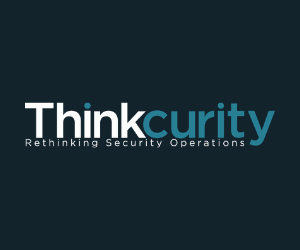When talking about growth and scalability, security companies can be overloaded with information. Pinpointing how to grow a business while maintaining healthy profit margins will help security companies apply best practices for optimal growth and scalability.
In this blog, we’ll discuss tell-tale signs of when security guard companies are ready for growth plus identify key areas to focus on for optimal growth and scalability. Let’s dive right in.
When Growth and Scalability is Your Next Step
Only a security company operator will know when is the right time to adapt operations to keep up with growth; however, there are numerous factors to consider.
- Is business growing steadily?
- Is there a need to hire more guards?
- Is it difficult to manage an organized operation?
Security companies will know they need a system made to optimize their growth when operators start to think: “how can I make my operation more efficient but cost effective?”
Achieving Growth The Right Way — Key Areas to Focus On
Can security companies achieve growth without impacting my bottom line? Short answer — yes.
Here are 3 areas where security companies need to focus their attention for optimal growth.
- Standardization: Standardize a baseline in reporting, training, and onboarding
- Integration: Establish seamless integration across all processes — from what a team does in the front-line to what supervisors and HR do in the back-office
- Optimization: Optimize operations by leveraging data and analytical insights in real-time — a guard’s activities, incidents on sites, guards on shift, missed posts, a complete timeline of guard schedules, plus essential business KPIs, and more.
Standardization
Standardization is key to growth. Standardization allows for standardizing reporting templates, online training modules, and onboarding procedures across all sites — per organization or per post function.
The benefit to standardization is of course efficiency. Streamlining business processes is the first step toward ensuring optimal business growth. Here are the following items that need to be standardized:
- Reporting: As with using a comprehensive configurable reporting template or simplified reporting solution. This is especially useful when guards have multiple reports to fill, such as incident reports or DARs.
- Training: Digital training modules have helped private security companies maintain consistency by ensuring their guards are:
- Always updated with necessary skills to work a specific post
- Knowledgeable on general and client specific SOPs
- Onboarding: A standardized onboarding procedure has all guard documentation and credentials online using a system tailor-made to track all back-office essentials.
Integration
What a team does in the front-line and what supervisors and HR do in the back-office must match up. When a growing security guard company needs to scale, these processes become the foundation of successful operations.
Front-line processes, like guard tour monitoring, remote activity tracking, post order management, and more must be connected with the back-office side of business. This ensures that time worked aligns with time billed and time paid.
The best tools for integrating front-line and back-office come with a security workforce management solution. They include Time and Labor Management support, payroll, and human resource solutions.
Time and labor management is essential for connecting guard schedules with payroll and billing. Human resources is the glue that ties all back-office activities together. From hiring to onboarding to benefits management, a comprehensive human resources solution is what makes or breaks a security company’s success.
Optimization
Having business operations that are standardized and integrated only goes so far. It’s the value that security company operators gain from these tools that make the effort worthwhile. That’s where optimization steps in.
An optimized security guard business starts with identifying key performance indicators (KPIs) that are essential for any business to track. Especially in security, having the tools to measure KPIs boosts its success.
A real-time dashboard is the best tool to turn data insights into action. To have a better understanding of business strengths and weaknesses, security companies can use the data insights gained from their front-line guards and have it displayed on an in-depth security metrics dashboard — all in real-time.
An in-depth dashboard is critical to ensure competitiveness and profitability. Plus, security companies can use a client facing real-time dashboard to provide full transparency on guard productivity and site status.
The Next Steps
Anticipating long-term growth depends on many factors only a security guard company operator will know how to answer. Using the right tools to establish standardization, integration, and optimization will be the best bet when looking to increase profits, scale affordably, and achieve business success.
In Thinkcurity’s Virtual Physical Security Summit, speaker Steve Vitale covered ways security companies can enhance their business to gain better business in this new normal. Click here to watch his session now!



